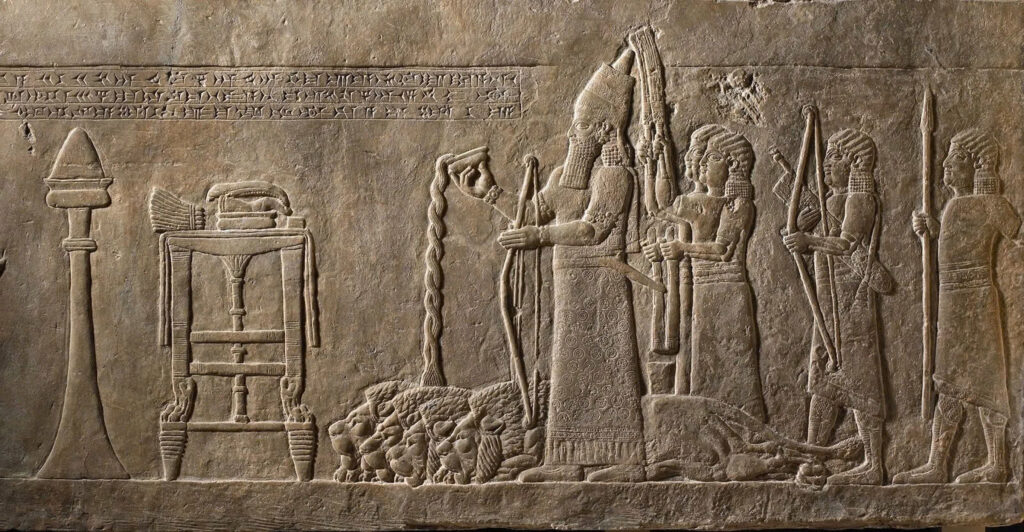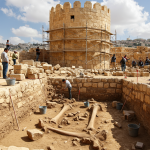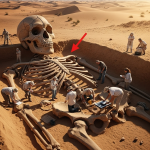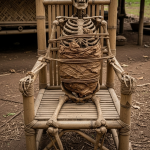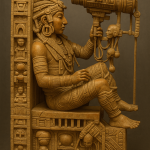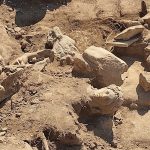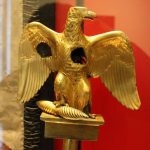BREAKING: Hidden Egyptian Mega-Tomb Discovered Beneath the Desert Sands Archaeologists have uncovered an astonishing underground tomb complex in Egypt, believed to date back over 4,000 years.
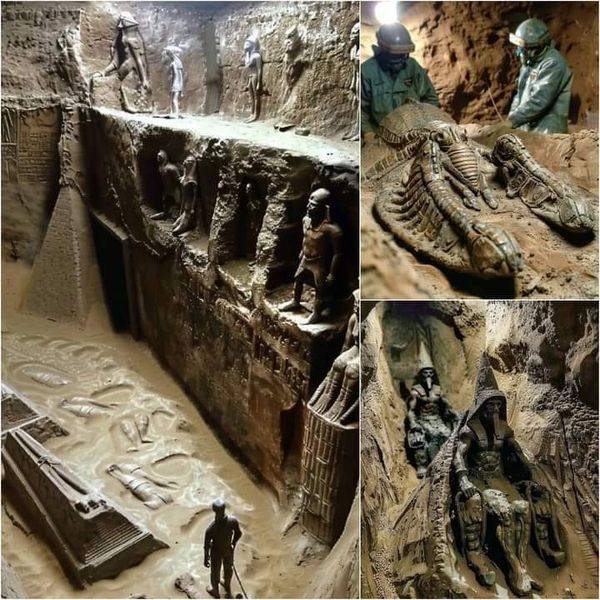
The Scholar-King Who Ruled an Empire
In 668 BCE, when Ashurbanipal ascended to the throne of Assyria, he inherited more than just a kingdom—he commanded one of history’s most formidable empires. Stretching from the Mediterranean shores to the Iranian highlands, his domain was a testament to centuries of military conquest and administrative excellence. From his magnificent capital at Nineveh, this remarkable ruler would demonstrate that true power lay not only in the sword, but in the preservation of knowledge.
Walls That Tell Stories of Victory
The Battle of Til-Tuba: Art as Imperial Propaganda
Ashurbanipal transformed his palace walls into grand narrative canvases, chronicling his greatest military triumphs. The most spectacular of these artistic achievements depicted the Battle of Til-Tuba, where Assyrian forces crushed the Elamite kingdom. These relief panels employed a revolutionary “continuous narrative” technique, much like an ancient graphic novel, showing multiple scenes of the same battle within a single composition.
The story unfolds dramatically across the stone: over 170 figures populate the chaotic battlefield, with the Elamite king Teumman and his son Tammaritu appearing repeatedly as the narrative progresses toward their inevitable doom. The climactic scene shows an Assyrian warrior triumphantly carrying Teumman’s severed head back to report the victory to his king.
The Garden of Gruesome Delights
Perhaps even more chilling than the battle scenes was Ashurbanipal’s garden banquet relief. Here, the king and queen are depicted enjoying an elegant outdoor feast, while Teumman’s head dangles grotesquely from a nearby tree—a macabre decoration that served as both trophy and warning. This juxtaposition of refined luxury and brutal conquest perfectly encapsulated Assyrian imperial ideology.
The Empire of Knowledge
A Library to Rival Alexandria
While Ashurbanipal’s military prowess was legendary, his intellectual achievements were equally remarkable. His library at Nineveh housed approximately 30,000 cuneiform tablets, creating one of antiquity’s greatest repositories of human knowledge. This collection encompassed everything from medical treatises and mathematical texts to literary masterpieces like the Epic of Gilgamesh.
The king took immense pride in his scholarly pursuits, often depicting himself with a stylus tucked into his belt—an unusual portrayal for an Assyrian monarch. In his own inscriptions, he boasted of mastering complex astronomical calculations, interpreting ancient Sumerian texts, and deciphering pre-flood inscriptions that had confounded other scholars.
The Administrative Machine
Behind the spectacular military campaigns and cultural achievements lay a sophisticated bureaucratic system that made the empire’s success possible. Thousands of administrative documents reveal the intricate network of governors, tax collectors, and scribes who kept this vast realm functioning. It was this unglamorous but essential infrastructure that truly sustained Assyrian power across generations.
The Melancholy of Empire
Despite his public displays of confidence and strength, private tablets reveal a more vulnerable side of Ashurbanipal. In moments of introspection, he wrote of the burdens of leadership: “Fighting in the land and argument in the house are not resolved. Confusion and evil words surround me. Unhappiness and ill health have arched my body.”
These personal reflections hint at the immense pressure of maintaining such a vast empire, and perhaps foreshadow its eventual decline.
Video
The End of an Era
Imperial Twilight
By the end of Ashurbanipal’s reign, the golden age of Assyrian dominance was drawing to a close. The empire had reached its geographical limits, and the constant warfare required to maintain control was becoming unsustainable. After the great king’s death, internal strife and external pressures began to fragment the once-mighty realm.
The rising power of Babylon to the south, combined with the growing strength of the Medes, gradually shifted the balance of power in Mesopotamia. Within decades, the Assyrian Empire would collapse, giving way to the Babylonian and eventually the Persian empires.
Preserving Ancient Majesty
Modern Guardians of the Past
Today, Ashurbanipal’s legacy lives on through careful museum curation and archaeological preservation. The British Museum’s exhibition brings these ancient stories to life using innovative techniques like laser-guided tours that illuminate key scenes in the narrative reliefs. From the terrifying depictions of conquered enemies to the exquisite craftsmanship of royal jewelry, these artifacts offer visitors a window into both the grandeur and the brutality of ancient imperial power.
The ongoing efforts to protect Iraq’s cultural heritage—from the early challenges faced by pioneering archaeologists to modern threats from extremist groups—ensure that future generations can continue to learn from Ashurbanipal’s remarkable civilization.
Through stone and clay, stylus and sword, the last great Assyrian emperor created a legacy that transcends the rise and fall of empires, reminding us that true power lies not just in conquest, but in the preservation and transmission of human knowledge and culture.


